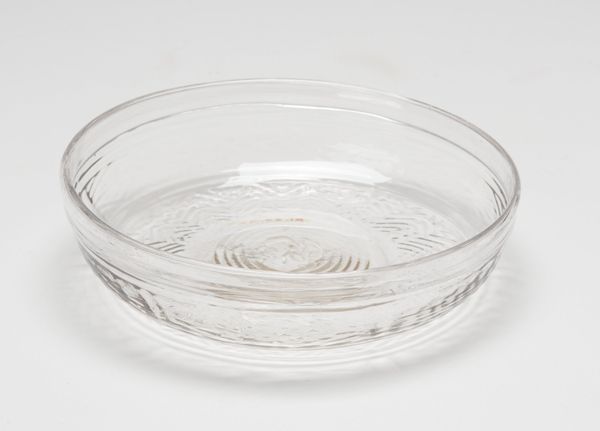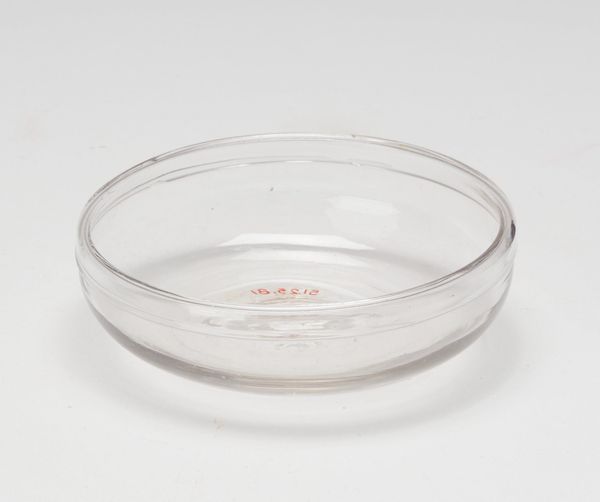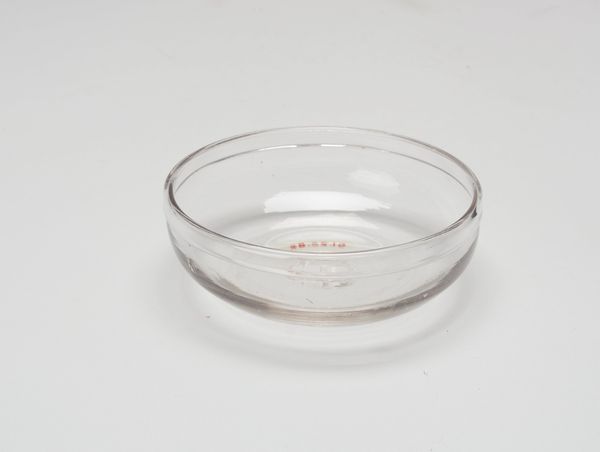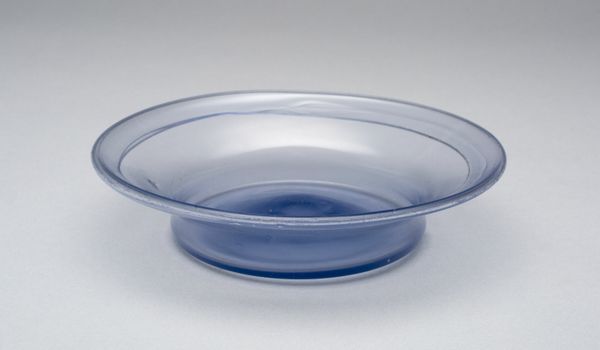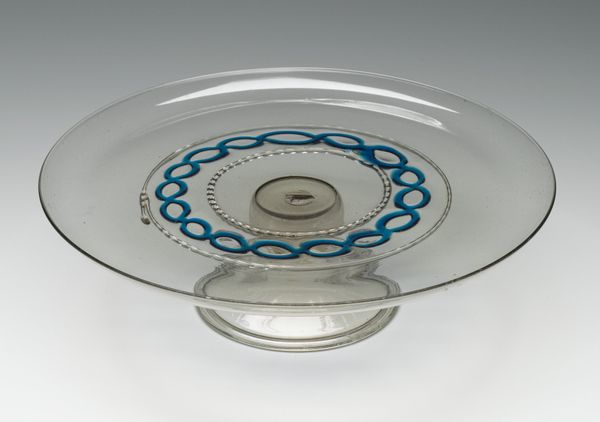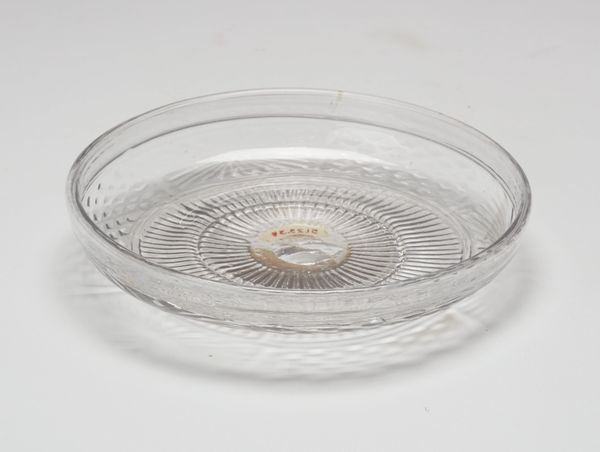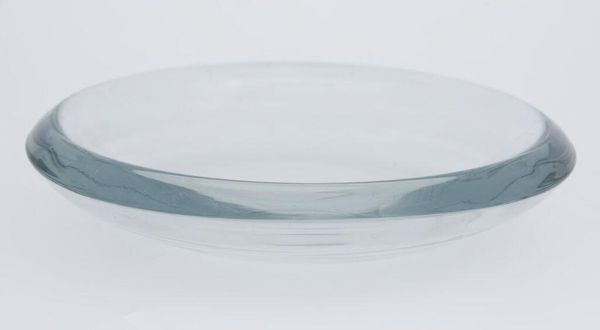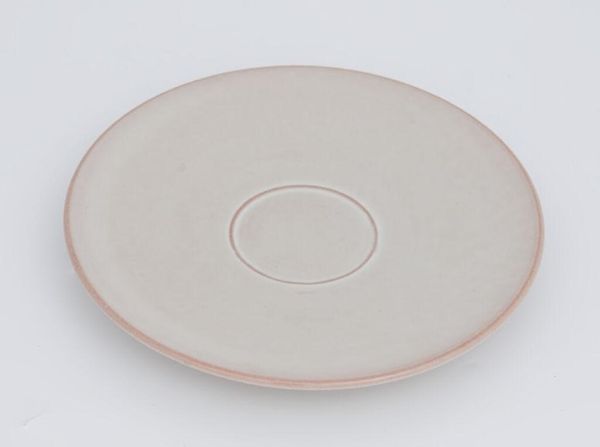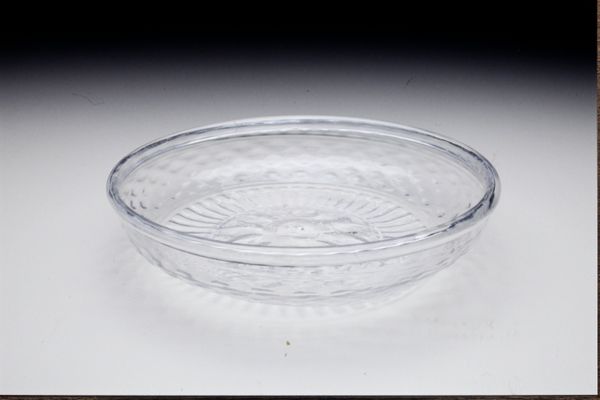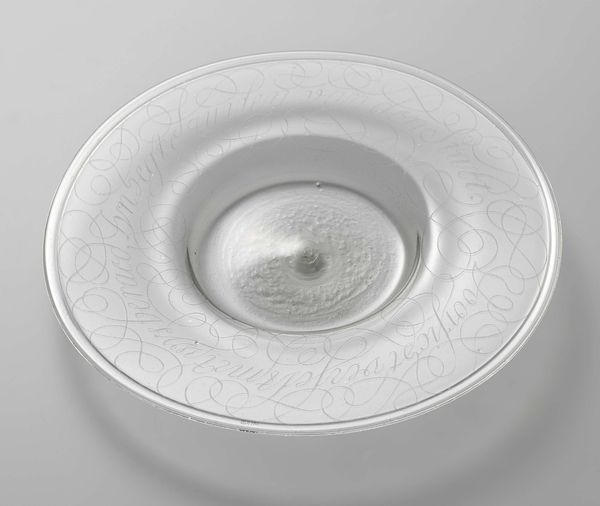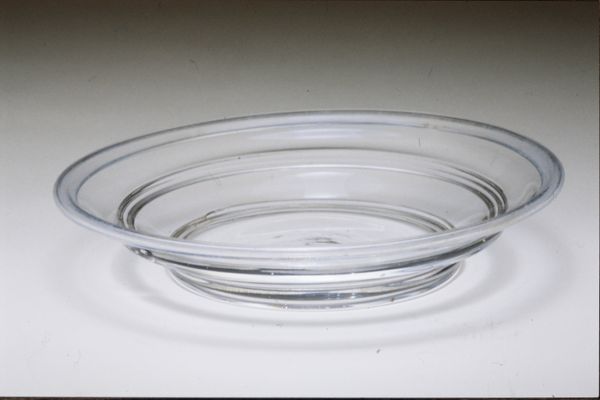
Schotel met het opschrift: Het booste quaed, niet in de vuilste quaen, maer in die, door 'et goe vernist, bestaen before 1692
0:00
0:00
anonymous
Rijksmuseum
photography
#
photography
Copyright: Rijks Museum: Open Domain
This glass plate, now in the Rijksmuseum, was made by an anonymous maker, at an unknown date. Its clear, thin form speaks to the mastery of glassblowing, a process demanding intense heat, precise timing, and practiced skill. Molten glass is gathered, inflated, shaped with tools, and then slowly cooled to avoid cracking. Glassblowing was traditionally a team effort, with specialized roles. The subtle variations in the glass’s surface reveal the hand of the maker, each breath and movement captured in the final form. The inscription on the plate warns that "The worst evil is not in the dirtiest women, but in those who are polished by goodness", this adds layers of meaning, transforming a functional object into a vehicle for moral reflection. The contrast between the transparency of the glass and the weight of the message invites us to consider how appearances can be deceiving. By considering its making, we see this plate as more than just a vessel; it's a testament to the complex relationship between material, skill, and social commentary.
Comments
No comments
Be the first to comment and join the conversation on the ultimate creative platform.
